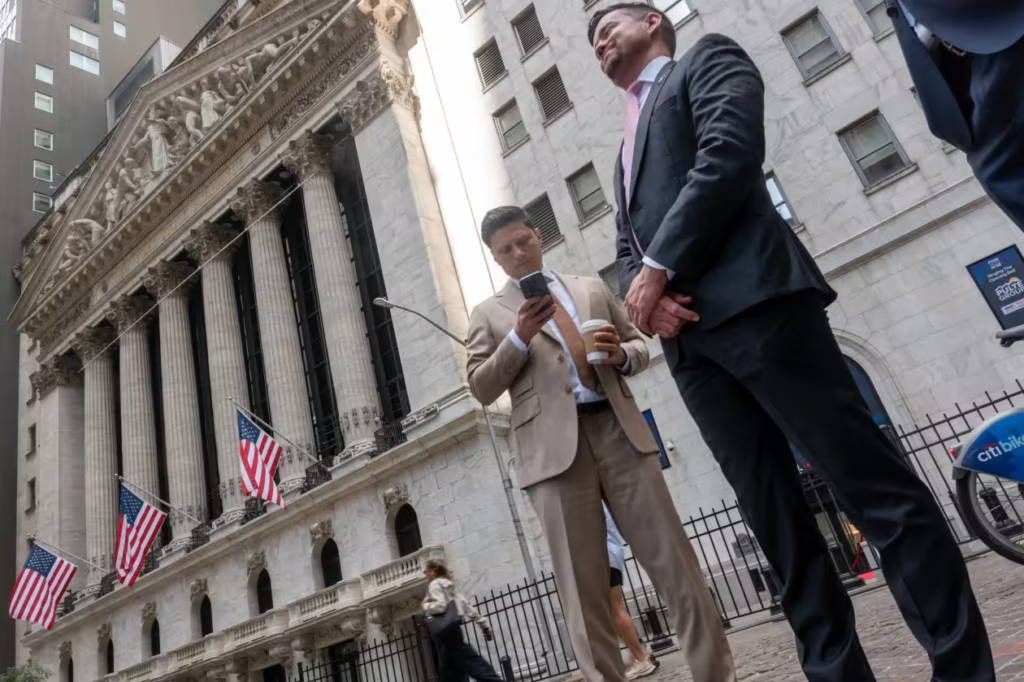On Wednesday afternoon, Treasury market yields were declining.
Investors are considering how much duration risk to take on in fixed income as the bond market suggests the Federal Reserve may start its interest-rate-cutting cycle as early as next week.
According to a recent analysis from Goldman Sachs Group on the results of its 2025 survey of investors in that group, family offices this year seemed positioned for central banks to decrease rates while still displaying limited appetite for long-dated bonds. They oversee the fortunes of affluent families, while the larger investment community keeps an eye on their intricate tactics.
According to Goldman’s comparison of data from its most recent poll in 2023, family offices have increased their exposure to securities with a term of three to five years while decreasing their allocation to shorter maturities in the bond market. Compared to 39% in Goldman’s prior survey, 57% of respondents had fixed-income portfolios with an average term between 3 and 5 years.
GOLDMAN SACHS
Given that short-term rates are declining more quickly this year than long-term yields in the U.S. Treasury market, family offices are favoring bond market lengths of three to five years. For instance, compared to 10-year and 30-year Treasury rates, the yield on the 2-year Treasury, which is susceptible to anticipated shifts in the Fed’s monetary policy, has fallen more sharply so far in 2025.
With federal-funds futures indicating a strong likelihood that the U.S. central bank will opt for a quarter percentage point decrease, investors are placing bets that the Fed will lower its benchmark rate at its policy meeting that ends on September 17.
“The global landscape has changed since our last survey in 2023,” according to Goldman’s 2025 Family Office Investment Insights report. “Escalating international tensions, policy shifts, and the looming threat of trade wars are all shaping family office sentiment.”
Following President Donald Trump’s announcement of his “liberation day” tariffs in April, which upset the international trading system, markets became incredibly volatile. However, market volatility decreased and U.S. stocks recovered from their April low when the White House postponed some tariffs to allow for trade talks with other nations.
According to Dow Jones Market Data, Tuesday marked the first occasion since early December that the three main U.S. stock-market benchmarks closed at an all-time high on the same day. The S&P 500 SPX, Nasdaq Composite COMP, and Dow Jones Industrial Average DJIA all set new records.
During a media briefing on the family office report at Goldman’s New York headquarters, Sara Naison-Tarajano, global head of private wealth management capital markets, stated that family offices are “overwhelmingly risk-on.” The paper presented the results of Goldman’s poll, which was conducted from May 20 to June 18 and involved 245 family offices worldwide.
According to Goldman, family offices have slightly raised their allocation to fixed income and expanded their exposure to public-market stocks in comparison to 2023.
GOLDMAN SACHS
In light of investor concerns about inflation and global fiscal constraints, they seemed to have little demand for long-duration bonds.
Jim Reid, global head of macroeconomic and thematic research at Deutsche Bank, wrote in an email on Wednesday that 10-year Treasury rates BX:TMUBMUSD10Y don’t always decline on average throughout the Fed’s rate-cutting cycles. Prices and bond yields move against each other.
Reid pointed out that the day before the Fed’s current rate-cutting cycle started a year ago, 10-year Treasury rates hit their lowest level since May 2023.
Risk to the tail
According to Goldman’s 2025 study, family offices ranked geopolitical conflict, political instability, and economic contraction as the top three investment risks.
When asked how, if at all, they were adjusting their portfolio for tail risk, the majority of respondents cited regional diversification, followed by gold (GC00) and U.S. Treasurys.
According to Goldman’s analysis, a “strikingly large proportion” of family offices in the Americas—35%—were not set up for tail risk. That contrasts with only 14% for the Asia-Pacific, or APAC, region and 12% for the EMEA region, which stands for Europe, the Middle East, and Africa.
In the meantime, according to Goldman’s survey, most family offices anticipated rising prices, geopolitical threats, and economic protectionism in the upcoming year.
GOLDMAN SACHS
In its research, Goldman stated that “discussions about tariffs are inextricably linked to their implications on inflation and economic growth.” “Globally, 57% of family offices, including a higher proportion of respondents in the Americas, believe that inflation will rise in the next 12 months.”
U.S. stocks have historically been “the best long-term hedge against inflation,” according to Goldman.
Read: BlackRock explains how to diversify as the conventional stock and bond combination is now riskier.
Investors are now anticipating the consumer-price index’s U.S. inflation report on Thursday. Before deciding where to set interest rates next week, the Fed will use the CPI statistics to examine inflation in August.
Despite the fact that inflation has been exceeding the Fed’s 2% objective, investors seemed confident on Wednesday that the central bank will drop interest rates next week in response to recent indications of a labor market slowdown.
According to the CME FedWatch Tool, traders in the fed-funds-futures market on Wednesday represented a 90.1% possibility that the Fed will decide to lower its benchmark rate by a quarter percentage point on September 17. The odds of a half-point cut were 9.9%.
Thus far this year, the Fed has maintained its policy rate at a target range of 4.25 to 4.5%.
According to FactSet data, as of the last check, the yield on the 2-year Treasury note BX:TMUBMUSD02Y was down 1 basis point on Wednesday afternoon to approximately 3.53%. The 30-year Treasury yield, BX:TMUBMUSD30Y, was retracting around 4 basis points to about 4.68%, while the 10-year Treasury rate was dropping roughly 5 basis points to about 4.03%.





